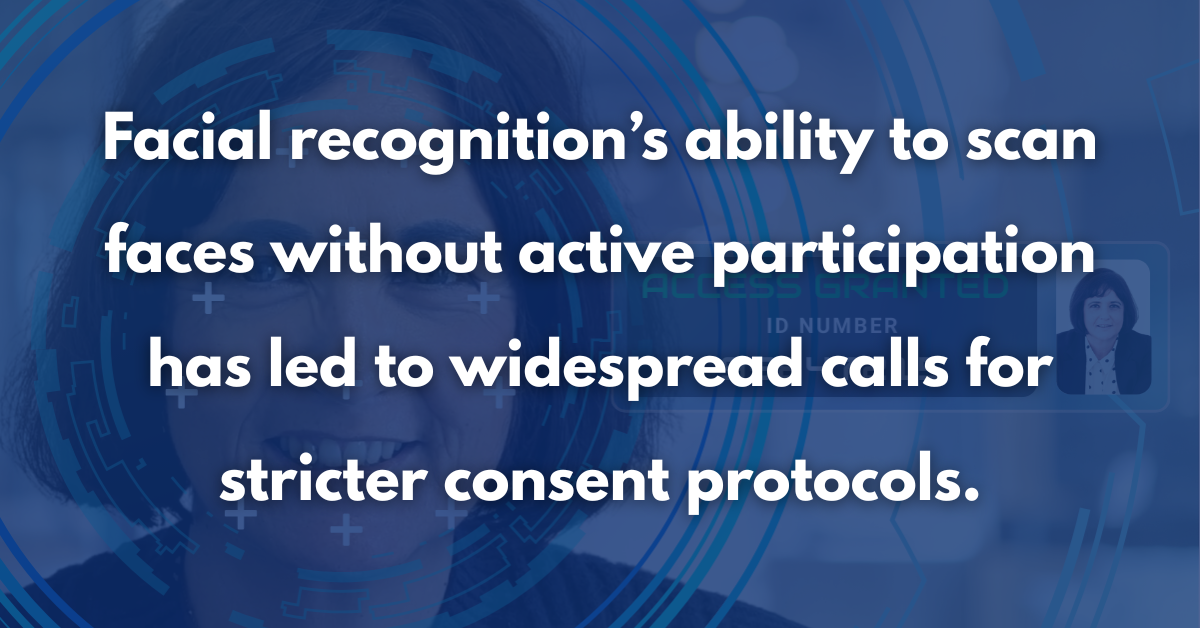Facial Recognition Privacy
Categories
Facial recognition technology is reshaping security and convenience in environments like transit hubs, corporate offices, and retail spaces. However, its ability to capture and analyze facial features raises significant concerns about facial recognition privacy. With 81% of Americans expressing unease about biometric data, per a 2023 Pew survey, organizations must prioritize ethical practices to maintain user trust and comply with regulations.
This article examines the privacy challenges of facial recognition, underscores the importance of ethical deployment, and provides seven actionable tips to safeguard privacy while harnessing its benefits in 2025.

The Privacy Challenge of Facial Recognition
Facial recognition privacy is uniquely complex due to the public visibility of faces, distinguishing it from biometrics like palm vein recognition. The technology maps facial landmarks—such as nose width or cheekbone structure—into encrypted digital templates for authentication. Unlike fingerprint scanning, which requires active contact, facial recognition can passively capture data in public spaces, sparking concerns about consent and potential surveillance.
Without stringent safeguards, risks of data misuse or breaches heighten, making ethical deployment essential to address facial recognition privacy concerns.
Why Ethical Deployment Matters
Ethical deployment is pivotal for ensuring compliance and fostering trust in facial recognition systems. Privacy violations can incur hefty penalties under laws like GDPR or CCPA, while eroding user confidence. A system designed with privacy at its core not only meets legal requirements but also encourages user acceptance, supporting sustained adoption across public and private settings.
- Safeguards individual rights and prevents unauthorized data access.
- Mitigates legal risks and protects organizational reputation.
- Builds user confidence, driving broader technology acceptance.
Privacy Risks: Where Facial Recognition Falls Short
Facial recognition privacy faces distinct vulnerabilities that demand proactive management, sharing some parallels with other biometric technologies.
Surveillance and Consent Issues
The passive nature of facial recognition allows scanning in public areas like shopping centers or stadiums without explicit user consent, unlike palm vein systems that require deliberate hand placement, amplifying concerns about unchecked monitoring.
Data Breach Potential
Even encrypted facial templates are vulnerable to sophisticated hacks, risking identity exposure due to the inherent visibility of faces, a challenge less pronounced in less observable biometrics like vein patterns.
Regulatory Gaps
In regions with weak privacy frameworks, facial data may be exploited without oversight, unlike palm vein systems often governed by stricter protocols, highlighting the need for robust compliance measures.
User Mistrust
Lack of transparency fuels fears that facial data could be retained indefinitely or shared with third parties, a concern intensified by the technology’s ability to operate unobtrusively in public spaces.
The Evolution of Facial Recognition: A Privacy Journey
The development of facial recognition reflects increasing focus on facial recognition privacy, driven by regulatory advancements and public advocacy.
Early Days: Privacy Challenges Emerge
1990s – Initial Systems: Early facial recognition stored raw images, raising significant security and privacy concerns due to lack of encryption.
2000s – Public Expansion: Widespread use in surveillance sparked debates over consent and data protection in public spaces.
Modern Advances: Privacy Takes Center Stage
2010s – Security Improvements: Adoption of encrypted templates reduced breach risks, addressing early vulnerabilities.
2020s – Regulatory Influence: Laws like GDPR and CCPA mandated stronger privacy protections, reshaping system design and data handling practices.
7 Pro Tips for Ethical Facial Recognition Deployment
These seven pro tips for ethical facial recognition deployment integrate best practices to prioritize facial recognition while ensuring effective performance in 2025.
Tip 1: Prioritize Explicit Consent with Transparency
Obtaining clear consent is a foundational tip for safeguarding facial recognition privacy. Require explicit permission—via signed forms or digital agreements—before capturing facial data, detailing its purpose and scope. Provide accessible opt-out options and display multilingual signage at scanning points to empower users and enhance trust.
- Use digital consent prompts before initiating scans.
- Offer opt-out mechanisms in multiple languages for inclusivity.
- Embed consent verification in enrollment processes.

Tip 2: Use Encrypted, Decentralized Storage
Secure storage is critical for protecting facial recognition privacy. Employ AES-256 encryption for all facial templates and store them on decentralized servers to minimize breach risks, avoiding single-point vulnerabilities of centralized systems. Implement tokenization to render templates unusable if intercepted, bolstering data security.
- Ensure end-to-end encryption for data in transit and at rest.
- Tokenize templates to prevent reconstruction by unauthorized parties.
Tip 3: Limit Data Retention and Conduct Audits
Minimizing data retention is essential for facial recognition privacy compliance. Establish clear retention policies, such as deleting facial templates 60 days after an event or 18 months after user disengagement, adhering to privacy regulations. Perform biannual internal audits to confirm data deletion and compliance, reinforcing accountability.
- Set retention limits (e.g., 60 days for temporary access scenarios).
- Audit data management practices every six months to ensure adherence.
Tip 4: Design Systems with Privacy-by-Design Principles
Embedding privacy-by-design principles ensures privacy from the ground up. Use cameras with narrow fields of view to capture only intended faces, and disable continuous recording unless critical, reducing unintended data collection while maintaining functionality.
Privacy Feature: Restricted Camera Range
Implementation: Limit scanning to designated enrollment areas.
Privacy Feature: No Persistent Recording
Implementation: Enable only for specific, justified use cases.
Tip 5: Educate Users to Build Trust
Educating users is a key strategy for enhancing facial recognition privacy and trust, addressing the 81% concern noted in Pew’s survey. Provide clear, accessible information about encryption, data rights, and deletion processes through signage, websites, or in-person sessions. Offer multilingual resources to ensure inclusivity and transparency.
- Host bi-monthly seminars on data protection measures.
- Distribute multilingual FAQs at scanning locations.
Tip 6: Monitor Compliance with Regular Audits
Consistent oversight strengthens ethical facial recognition deployment. Conduct quarterly internal audits to assess encryption standards, consent records, and access controls. Supplement with annual third-party audits to ensure impartiality, maintaining rigorous facial recognition privacy standards.
- Review security protocols every three months.
- Engage external auditors yearly for independent validation.
Tip 7: Stay Ahead of Regulatory Changes
Adapting to evolving privacy laws is crucial for facial recognition privacy compliance. Regularly monitor updates to GDPR, CCPA, and regional regulations, revising consent forms and data practices accordingly. Proactively align with emerging standards to ensure ethical operation in 2025.
- Track regulatory changes bi-monthly to stay informed.
- Update policies promptly to reflect new legal requirements.
Conclusion: Toward a Privacy-First Future
Navigating facial recognition privacy challenges is critical for ethical deployment, balancing technological advancements with user trust. From transit hubs and secure facilities and retail environments and large-scale events, these seven tips—securing explicit consent, encrypting data, limiting retention, designing with privacy, educating users, auditing compliance, and adapting to regulations—offer a robust framework for success. By prioritizing facial recognition privacy, organizations can leverage this technology responsibly, ensuring compliance, fostering confidence, and paving the way for an ethical, privacy-first future in 2025.
https://clockedin.uk/






